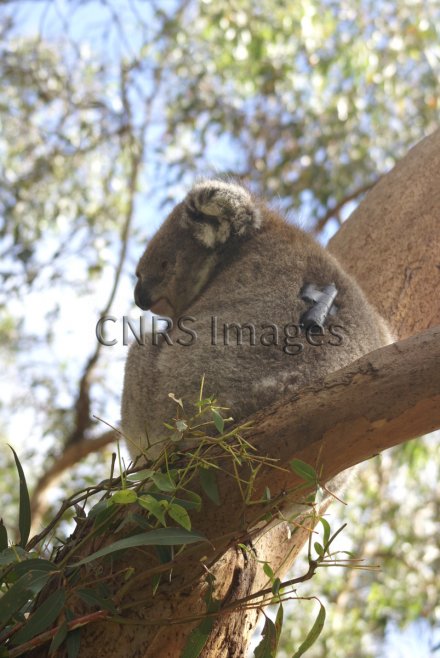Production year
2007

© Yan ROPERT-COUDERT/IPHC/CNRS Images
20090001_1182
Un koala, "Phascolarctos cinereus", équipé d'un enregistreur de signaux ECG (électrocardiogramme) et d'un accéléromètre, parc de Phillip Island, Melbourne, Australie. Le but de cette expérience était d'examiner l'effet de la proximité des touristes sur la fréquence cardiaque des koalas. En effet, les koalas ont un "budget" énergétique très strict puisqu'ils ne se nourrissent que de feuilles d'eucalyptus. Une fuite face à un danger serait donc trop coûteuse en énergie. Les résultats montrent que, même s'ils ne fuient pas, les koalas présentent une réaction physiologique forte qui a d'importantes conséquences pour leur conservation.
The use of media visible on the CNRS Images Platform can be granted on request. Any reproduction or representation is forbidden without prior authorization from CNRS Images (except for resources under Creative Commons license).
No modification of an image may be made without the prior consent of CNRS Images.
No use of an image for advertising purposes or distribution to a third party may be made without the prior agreement of CNRS Images.
For more information, please consult our general conditions
2007
Our work is guided by the way scientists question the world around them and we translate their research into images to help people to understand the world better and to awaken their curiosity and wonderment.